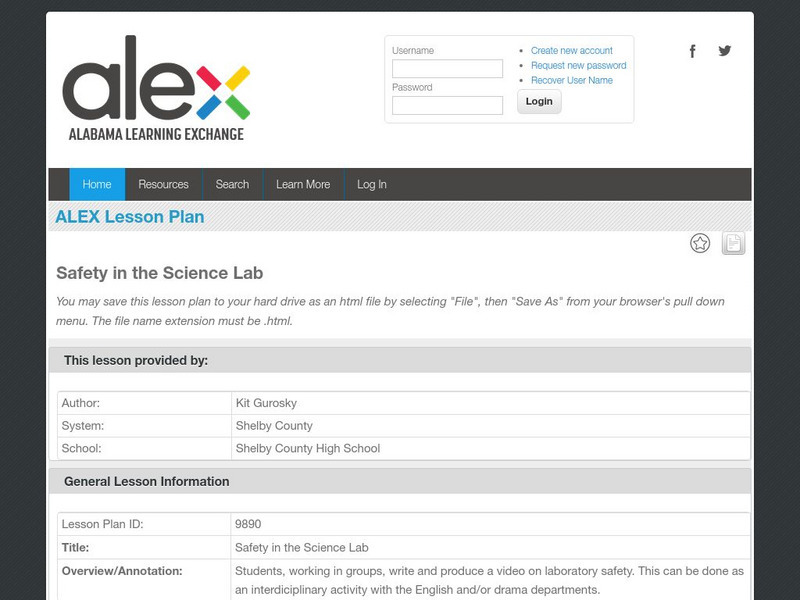Curated OER
Organic Materials in an Aquatic Ecosystem
Students evaluate the relationship between oxygen levels and the amount of organic matter in an aquatic ecosystem. They explain the relationship between oxygen levels, bacteria and the breakdown of organic matter using an indicator...
Curated OER
Transpiration
Students explore what affects the rate of transpiration in plants. They measure the rate of transpiration and analyze variables and additional factors that might slow or speed up the rate of transpiration.
Curated OER
Franklin Mountains
Students review the steps of the rock cycle. In groups, they identify the natural forces that cause weathering and erosion. They describe how sedimentary, metamorphic and igneous rocks might be formed in nature to end the lesson.
Curated OER
Animal Kingdom: Phylum Chordata
Students use a dichotomous key to classify various vertebrate jar speciments into classes. They examine the speciments for general characteristics of each class and fill in a corresponding chart and then complete a few final assessment...
Kenan Fellows
The Newton Challenge
Make Newton proud. Scholars apply their understanding of forces and energy to an engineering design challenge. They learn about simple machines, create a presentation on Newton's laws, and develop a balloon-powered car.
Curated OER
Celebrate Black History
Students research African-American mathematicians. In this middle school mathematics lesson, students celebrate Black History by conducting Internet research on an African-American, mathematicians or scientist. Students...
Curated OER
Roll with the Punches: Depression Era Machinery
Students construct models of simple and complicated machines with Legos. Then they design an experiment using the scientific method. ESE modifications included.
Curated OER
GUM: More, Less, or the Same?
Students confirm the law of conservation of matter by weighing chewing gum before and after it is chewed.
Alabama Learning Exchange
Alex: Safety in the Science Lab
Students, working in groups, write and produce a video on laboratory safety. This can be done as an interdisciplinary activity with the English and/or drama departments.
Other
Flinn Scientific: Safety
Tons of science safety rules and information are available here, arranged by category. Resources are available for students and teachers on maintaining safety during labs and other activities.
University of Missouri
Microbes in Action: Classroom Activities: Water Quality Testing [Pdf]
In this experiment, students will test the quality of a water sample by observing the number of coliform bacteria. Coliform bacteria are found in human intestines and a large amount can indicate water contamination. Lesson plan gives a...
Other
Usda: Virtual Labs: Controlling Water Activity in Food
In this science simulation, students investigate water activity in corn that has been dried using traditional Native American methods in order to learn about the best way to ensure food safety.
Other
Usda: Virtual Labs: Understanding Water Activity
In this science simulation, students investigate the behavior of water in food and how this can contribute to food spoilage.
Other
Fayette County Schools: Frankenstein & Electric Safety
Site contains a science-based literacy activity that explains how to use electricity in a safe manner. A worksheet is provided.
Science and Mathematics Initiative for Learning Enhancement (SMILE)
Smile: Colliding Spheres
This lab activity from the Illinois Institute of Technology lets learners investigate the impact of collisions upon the velocity and momentum of the colliding objects. Requires understanding of vectors.











